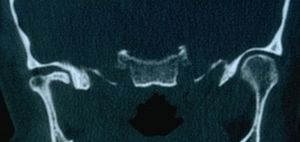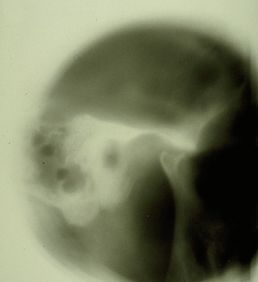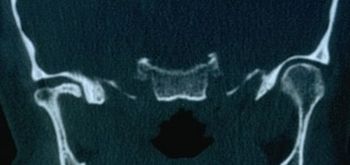'Logic of medical language'
'Logic of medical language'
Abstract
"The document 'Logic of Medical Language - Masticationpedia' addresses the complexity of medical language, highlighting how its ambiguity can lead to misinterpretations and diagnostic errors. Through the analysis of a clinical case, it explores the need for formal logic to correctly interpret medical terms, emphasizing the importance of context and intention in term interpretation. Here is a more detailed synopsis, enriched with some key paragraphs from the document:
Medical Language Ambiguity: The text begins by discussing how medical language, a mix of technical terminology and natural language, can generate ambiguity, with specific examples demonstrating how different interpretations of the same medical condition can lead to diverse and sometimes conflicting diagnoses.
The Clinical Case of Mary Poppins: The case of a patient, Mary Poppins (hypothetical name), who has received care from various medical specialties for over a decade is presented. Her clinical history is used as an example to discuss the challenges posed by linguistic ambiguity in the diagnostic process, showing how medical terms such as "orofacial pain" can be interpreted differently by dentists, neurologists, and other specialists.
Encrypted Machine Language and Brain Communication: The document introduces the concept of "encrypted machine language" to describe communication between the human brain (both the patient's and the observer's) and medical professionals, comparing this communication to computer cryptography. This analogy serves to highlight how the incorrect understanding of medical signals can lead to wrong diagnoses.
Meaning and Ambiguity of Medical Terms: The complexity of meaning in medical terms is explored, highlighting how the understanding of a term can vary significantly depending on context and the user's intention. This in-depth look at the semantic aspects of medical terms underscores the need for more accurate interpretation to prevent diagnostic errors.
Final Considerations: The conclusions reaffirm the importance of logical and adaptive thinking in the medical diagnostic process. A paradigm shift is suggested, shifting focus from the symptom to "encrypted machine language" in order to gain a more complete understanding of the disease and improve the diagnostic process by involving more actors.
These key points emphasize how the document questions the effectiveness of current medical language and proposes innovative approaches to overcome its limitations, thereby improving the accuracy of diagnoses and the quality of healthcare."
Medical language is an extended natural language
Language, essential in the medical field, can sometimes be a source of misunderstandings and errors due to its semantically limited nature and lack of coherence with established scientific paradigms. The discrepancy between the use of language and the scientific context is highlighted in the ambiguity of terms like "orofacial pain," whose meaning can significantly vary if interpreted through classical logic rather than formal logic.
The transition from classical to formal logic is not merely an additional detail but requires meticulous and accurate description. Despite extraordinary advances in medical and dental technology, with the development of advanced instruments such as electromyographs, cone beam computed tomography (CBCT), and digital oral scanning systems, there remains a need for refinement of medical language.
It is crucial to distinguish between natural languages (such as English, German, Italian, etc.) and formal languages, for example, mathematics. The former emerge spontaneously within communities, both social and scientific, while the latter are artificially created for specific applications in fields such as mathematics, logic, and computer programming. Formal languages are characterized by their well-defined syntax and semantics, unlike natural languages, which, despite having a grammar, often lack in terms of explicit semantics.
To ensure that the analysis remains dynamic and engaging, avoiding turning into a dry philosophical dissertation, an exemplary clinical case will be proposed for examination. This will be analyzed through the application of different language logics:
Clinical case and logic of medical language
The patient, Mary Poppins (a fictitious name), has benefited from multidisciplinary medical attention for over a decade, receiving care from dentists, general practitioners, neurologists, and dermatologists. Her medical history is summarized as follows:
At the age of 40, Mrs. Poppins first noticed the appearance of small spots of abnormal pigmentation on the right side of her face. After ten years, a series of significant developments occurred in her condition. During a hospitalization in dermatology, she underwent a skin biopsy, which revealed a diagnosis of localized facial scleroderma, commonly called morphea. Following the diagnosis, she was prescribed corticosteroids. At 44, she began to experience involuntary contractions of the right masseter and temporal muscles, which over time increased in frequency and duration. She described these episodes as blocks, both daytime and nighttime. At her first neurological evaluation, although the discoloration was less marked, her face showed significant asymmetry, with a retraction of the right cheek and a noticeable hypertrophy of the right masseter and temporal muscles. She received various diagnoses, reflecting the challenges posed by the limitations of medical language.
The clinical context is condensed as follows: the patient, using her natural language, communicates the psychophysical discomfort that has long tormented her. After conducting a series of investigations, such as anamnesis, stratigraphy, and computed tomography of the temporomandibular joint (Figures 1, 2, and 3), the dentist formulates a diagnosis of "Temporomandibular Disorders" (TMD).[1][2][3] On the other hand, the neurologist opts for a diagnosis of organic neuromotor pathology, called "Neuropathic Orofacial Pain" (nOP), excluding or minimizing the TMD component as the primary cause. In order to adopt an unbiased approach, we will consider the patient's condition as "TMDs/nOP", thus not favoring either of the two interpretations.
We are obviously in front of a series of topics that deserve adequate discussion because they concern clinical diagnostics.
Unlike formal languages used in mathematics, logic, and computer programming – characterized by artificial systems of signs governed by strict syntactic and semantic rules – most scientific languages evolve as an extension of natural language, enriching it with a set of technical terms. Medical language falls into this intermediate category: it arises from the expansion of everyday language by incorporating specific terminologies such as "neuropathic pain," "Temporomandibular Disorders," "demyelination," "allodynia," etc. This evolution does not involve the adoption of syntax or semantics distinct from those of the natural language from which it derives. Take, for example, the term "disease" in the context of patient Mary Poppins: a key word in medicine, essential for nosology, research, and clinical practice. Although it represents a fundamental concept in the field, its definition remains remarkably vague and not fully outlined. This ambiguity underscores the intrinsic complexity of medical language, which, despite being enriched with technical terminology, maintains the flexible and sometimes indeterminate characteristics of the natural language from which it originates.
The exact meaning of the term "disease" eludes unanimous understanding, primarily interesting some philosophers of medicine, while most professionals in the field seem unconcerned with its precise definition. The fundamental question is whether the concept of "disease" should be associated with the subject or patient in individual terms, or whether it should refer to the System, that is, the living organism as a whole. This raises a further question: is it possible that a patient, who is not considered sick at time , might actually coexist with a system that was already in a state of structural damage at an earlier moment, indicated as ?
This reflection leads to deep discussions on the dynamic nature of health and disease, proposing that disease should not be seen simply as an instantaneous state or a static condition, but as an evolutionary process, influenced by temporal factors and the interaction between different biological and pathological systems within the organism. This perspective requires a more sophisticated and probably quantitative interpretation of health, taking into account the temporal variations and dynamics between various biological and pathological systems.
The use of the term "language without semantics," treated as if it were irrelevant or devoid of consequences, and its derivatives share the same lack of semantic clarity. This statement underscores a deep criticism of the assumption that language can exist in a purely structural or formal form, lacking semantic content that defines its meaning. In this way, the essential interdependence between semantics and language for understanding and effective communication is highlighted.[4]
- In short,
The question of whether the patient, identified as Mary Poppins, is suffering from a pathology, or if it is her masticatory system exhibiting pathological symptoms, calls for a detailed analysis from a medical standpoint. The distinction between an individual disease and a dysfunction of a complex system like the masticatory system requires a holistic approach that considers the interrelations between the various anatomical and functional components involved.
Medically, the condition could be interpreted as a pathology of the "System," that is, of the masticatory system as a whole. This system is comprised of multiple subsystems, including sensory receptors, both peripheral and central nervous tissue, jaw bones, teeth, tongue, and skin, each playing a critical role in the harmonious functioning of the entire system. A disorder in any of these components can therefore negatively affect the health of the masticatory system as a whole.
Alternatively, the issue could be considered as a specific pathology of the "organ," in this context, the temporomandibular joint (TMJ), which plays a crucial role in mastication and phonation. Dysfunctions or pathologies of the TMJ can lead to complex symptoms that affect not only masticatory functionality but also the patient's quality of life, highlighting the importance of accurate diagnosis and targeted therapeutic approach.
This discussion emphasizes how the ambiguities and limitations of natural language can complicate communication and understanding in the medical field, especially when attempting to describe and diagnose complex conditions. The use of precise medical terminology, along with the analysis of specific clinical cases, thus becomes essential to overcoming these challenges, facilitating clear dialogue and a better understanding of pathologies within the medical community.
Clinical approach
(hover over the images)
Understanding of Medical Terminology
Exploring what "meaning" actually signifies enters us into a complex and multifaceted territory. The Cambridge Dictionary defines it as "what something expresses or represents."[5]However, this explanation, intuitive as it may be, leaves the question open since the understanding of "meaning" remains broad and not universally agreed upon. Various theories, each with their strengths and weaknesses, seek to address this question, leading to heated debates without a definitive answer.[6][7].
Traditionally, a term is considered a linguistic label representing an object, whether concrete or abstract. In this model, the term acts as an intermediary between language and the object it represents, as in the case of the word "apple," which evokes the image of the fruit known to everyone, regardless of their culture or age. However, terms like "orofacial pain" acquire different meanings depending on the context: for a neurologist, for a dentist, or for Mary Poppins herself, the meaning will vary considerably, reflecting different perspectives and knowledge bases.
These expressions do not derive their meaning merely from representing something "out there" in the world, but rather from how they interact with other terms within their specific world or context. For Mary Poppins, pain takes on a particular meaning in relation to her personal experience and consciousness, independent of any quantifiable external expression such as attempting to assign it a value on a scale from 0 to 10, which may prove to be meaningless without an internal or normalized context.
Similarly, a neurologist will interpret "pain in the right half of the face" based solely on his professional context, involving concepts like synapses, axons, ion channels, and action potentials. Conversely, a dentist will frame the meaning through a lens focused on teeth, the temporomandibular joint, masticatory muscles, and occlusion, demonstrating how meaning is intrinsically linked to the reference context.
Considering concepts is crucial in formulating a "differential diagnosis," as their misunderstanding can lead to clinical errors. It is therefore essential to explore the modern philosophy of "Meaning," introduced by Gottlob Frege,[8] which articulates the meaning of a term through the notions of "extension" and "intension."
The "extension" of a concept includes all entities that share a certain characteristic, while "intension" refers to a set of attributes that outline that idea. Taking "pain" as an example, this term is generically applied to a wide range of human experiences, showing high extension but low intension. However, analyzing specific pain in contexts such as dental implants, inflammatory dental pulpitis, and neuropathic pain (atypical odontalgia),[9] we observe that:
- The increase in mechanical and sensory perception threshold follows the activation of C fibers.
- In cases of atypical odontalgia, somatosensory abnormalities such as allodynia, decreased mechanical perception, and reduced pain modulation emerge.
- After the insertion of an implant, no significant somatosensory alterations are noted, although mild pain in the affected area is reported.
- In general, "pain" has a wide extension and limited intension, but focusing on specific types of pain, we notice that greater intension leads to a reduction in extension.
The "intension" of a concept indicates the distinctive aspects that separate it from others, reducing the concept's extension as the specificity of the intension increases. This allows us to distinguish, for example, TMJ pain from neuropathic pain.
In conclusion, the meaning of a term in a given language can be considered as an ordered pair of extension and intension, within a "context."
Specifically, in the dental context, "pain in the right half of the face" embraces a wide extension and an intension delineated by clinical characteristics and radiological or EMG investigations. In the neurological context, however, such pain is associated with an extension and intension defined by specific clinical and diagnostic parameters.
This analysis highlights the vulnerability of medical language to causes of semantic and contextual ambiguity, showing how terms such as "nOP" or "TMD" can assume markedly different meanings depending on the context.[10]
Ambiguity and Vagueness
Beyond the specific language used, the meaning of a medical term is strongly influenced by its originating context, which can lead to phenomena of "ambiguity" or "polysemy." A term is considered ambiguous or polysemic when it has more than one meaning. Linguistics and philosophy have paid considerable attention to these phenomena of ambiguity and vagueness;[11][12][13]however, despite the negative impact that ambiguity and vagueness can have on adherence to and implementation of Clinical Practice Guidelines (CPGs),[14] these concepts have not yet been fully investigated and distinguished in the medical context.
Doctors' interpretations of vague medical terms can vary significantly,[15]leading to less uniformity and greater variations in clinical practices compared to CPGs. Ambiguity is classified into syntactic, semantic, and pragmatic.[16]
As previously mentioned, a simple linguistic expression like the one referring to Mary Poppins can acquire at least three different meanings depending on the context. The ambiguity and vagueness associated with the term "orofacial pain" can thus become a source of diagnostic errors, highlighting a certain inefficiency of medical linguistic logic in decoding the "machine message" transmitted by the System in real-time.
We delve deeper into this fascinating topic of "encrypted machine language," from which the subsequent chapters will develop.
The term "orofacial pain" does not gain its meaning so much from its purest lexical expression as from the context in which it manifests, evoking a wide range of clinical domains, related symptoms, and interactions with other neuromotor systems, the trigeminal nerve, dental districts, etc. This machine language does not translate directly into verbal language but into an encrypted code based on its own alphabet, which must be deciphered to be converted into natural language. The focus then shifts to the linguistic logic employed to decode this message. To better illustrate this concept, let's consider some practical examples.
Imagine that Mary Poppins complains of "orofacial pain," thus communicating her condition to the referring healthcare providers:
During this period, ‘vesicular lesions’ formed on my skin, which were more evident in the right half of my face.
In this period, however, the pain became more intense and intermittent»
The healthcare provider, whether a dermatologist, dentist, or neurologist, picks up certain verbal messages in Mary Poppins' dialogue, such as "widespread facial pain" or "TMJ" or "vesicular lesion," and establishes a series of hypothetical diagnostic conclusions that have nothing to do with encrypted language.
However, in this context, we should move away from patterns and preconceived opinions to better understand the concept of "encrypted language." Let's assume, then, that the System is generating and sending the following encrypted message, for example: "Ephaptic."
Now, what relation does "Ephaptic" have with nOP or TMD?
Nothing and everything, as we will see better at the end of the chapters on the logic of medical language; we will then devote time to the concepts of cryptography and decryption. Perhaps we've heard about them in spy movies or in information security, but they are also important in medicine, as you will see..................
Strategic dental topics for authors to subscribe an article
Medical Language Complexity, Diagnostic Errors in Medicine, Formal Logic in Medical Terminology, Medical Terminology Ambiguity, Interpretation of Medical Terms, Encrypted Machine Language in Medicine, Clinical Case Study in Medicine, Medical Communication Errors, Semantic Ambiguity in Healthcare, Medical Diagnostics Improvement, Medical Language and Patient Care, Interdisciplinary Medical Diagnostics, Medical Terms and Context, Cryptographic Analogies in Medicine
Bibliography & references
- ↑ Tanaka E, Detamore MS, Mercuri LG, «Degenerative disorders of the temporomandibular joint: etiology, diagnosis, and treatment», in J Dent Res, 2008».
PMID:18362309
DOI:10.1177/154405910808700406- ↑ Roberts WE, Stocum DL, «Part II: Temporomandibular Joint (TMJ)-Regeneration, Degeneration, and Adaptation», in Curr Osteoporos Rep, 2018».
PMID:29943316
DOI:10.1007/s11914-018-0462-8- ↑ Lingzhi L, Huimin S, Han X, Lizhen W, «MRI assessment and histopathologic evaluation of subchondral bone remodeling in temporomandibular joint osteoarthritis: a retrospective study», in Oral Surg Oral Med Oral Pathol Oral Radiol, 2018».
PMID:30122441
DOI:10.1016/j.oooo.2018.05.047- ↑ Sadegh-Zadeh Kazem, «Handbook of Analytic Philosophy of Medicine», Springer, 2012, Dordrecht».
ISBN: 978-94-007-2259-0
DOI:10.1007/978-94-007-2260-6- ↑ Cambridge Dictionary online
- ↑ Blouw P, Eliasmith C, «Using Neural Networks to Generate Inferential Roles for Natural Language», in Front Psychol, 2018».
PMID:29387031
DOI:10.3389/fpsyg.2017.02335
This is an Open Access resource! - ↑ Green K, «Dummett: Philosophy of Language», 2001».
ISBN: 978-0-745-66672-3- ↑ Wikipedia entry
- ↑ Porporatti AL, Bonjardim LR, Stuginski-Barbosa J, Bonfante EA, Costa YM, Rodrigues Conti PC, «Pain from Dental Implant Placement, Inflammatory Pulpitis Pain, and Neuropathic Pain Present Different Somatosensory Profiles», in J Oral Facial Pain Headache, 2017».
PMID:28118417
DOI:10.11607/ofph.1680- ↑ Jääskeläinen SK, «Differential Diagnosis of Chronic Neuropathic Orofacial Pain: Role of Clinical Neurophysiology», in J Clin Neurophysiol, 2019».
PMID:31688325
DOI:10.1097/WNP.0000000000000583- ↑ Schick F, «Ambiguity and Logic», Cambridge University Press, 2003».
ISBN: 9780521531719- ↑ Teigen KH, «The language of uncertainty», in Acta Psychologica, 1988».
DOI:10.1016/0001-6918(88)90043-1- ↑ Varzi AC, «Vagueness», Nature Publishing Group, 2003, London, UK».
ISBN: 9780470016190
DOI:10.1002/0470018860- ↑ Codish S, Shiffman RN, «A model of ambiguity and vagueness in clinical practice guideline recommendations», in AMIA Annu Symp Proc, 2005».
PMID:16779019
This is an Open Access resource! - ↑ Kong A, Barnett GO, Mosteller F, Youtz C, «How medical professionals evaluate expressions of probability», in N Engl J Med, 1986».
PMID:3748081
DOI:10.1056/NEJM198609183151206- ↑ Bemmel J, Musen MA, «A Handbook of Medical Informatics», Houten/Diegem, 1997, Bonn, D».





